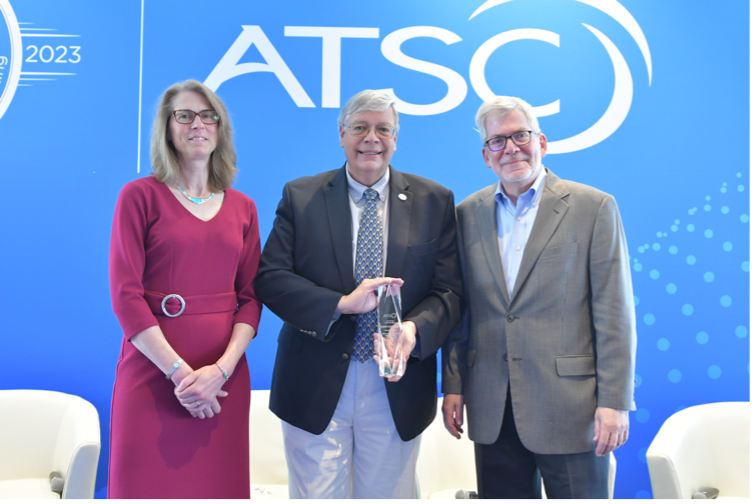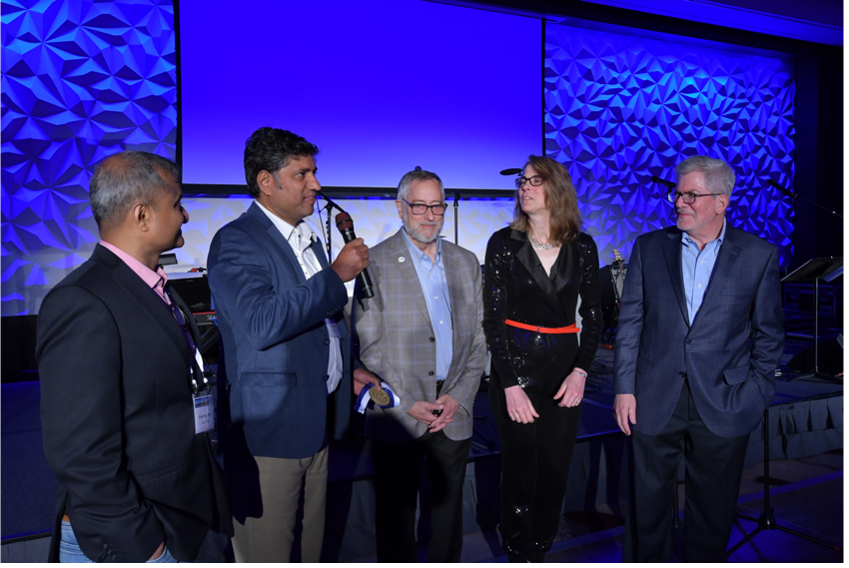ATSC Honors Glenn Reitmeier, Saankhya Labs For ATSC 3.0 Tech Leadership
The former NBCU engineer received the Lechner Award; the lab garnered the Richer honor

WASHINGTON D.C.—The Advanced Television Systems Committee honored TV engineer and visionary Glenn Reitmeier June 14 with its Bernard J. Lechner Outstanding Contributor Award and Saankhya Labs with its Mark Richer Industry Leadership Medal during its awards presentation ceremony on day two of the NextGen Broadcast Conference.
Reitmeier, who founded the GlennReitmeierTV consultancy after serving as NBCUniversal vice president of Advanced Technology and then as senior vice president, Technology Standards and Policy, played an instrumental part earlier in his career while at Sarnoff Labs and a Sarnoff incubator company in the development, testing an ultimate standardization of digital HDTV and the subsequent A/53 ATSC standard (now called ATSC 1).
Later, he advocated to the ATSC board for a next-generation digital TV system. That suggestion, which he has described as a “What? You’re crazy” proposal, ultimately grew into the ATSC 3.0 suite of standards.
ATSC honors a member annually who has made invaluable and exemplary contributions to ATSC through his or her technical and leadership with its Lechner award.
Saankhya Labs CEO Parag Naik and vice president of sales Prashant Maru accepted the Mark Richer award on behalf of the company. That award is bestowed annually on an individual or team that demonstrates exemplary leadership in advancing the committee’s mission and epitomizes the vision and leadership qualities of Mark Richer, former ATSC president for whom the award is named.

The fabless semiconductor solutions company based in Bengaluru, India, is believed to have produced the world’s first cognitive Software Defined Radio (SDR) chipsets. Those chips have helped to accelerate NextGen TV adoption, offering tech manufacturers a flexible and affordable way to build reception of ATSC 3.0 as well as other television standards into their products. The low-power consumption version of that chipset is at the heart of the Mark One NextGen TV smartphone, made available in production samples in October 2020, that is being used to test and demonstrate the viability of NextGen TV reception in mobile phones.
Saankhya Labs and ONE Media 3.0, a wholly owned subsidiary of Sinclair Broadcast Group, have teamed up on development of Cognitive SDR chips for 3.0 reception as well as agreed to work together to accelerate development of 5G Next Generation Broadcast to serve as an offload platform for wireless video traffic.
Get the TV Tech Newsletter
The professional video industry's #1 source for news, trends and product and tech information. Sign up below.
More information is available online.
Phil Kurz is a contributing editor to TV Tech. He has written about TV and video technology for more than 30 years and served as editor of three leading industry magazines. He earned a Bachelor of Journalism and a Master’s Degree in Journalism from the University of Missouri-Columbia School of Journalism.

